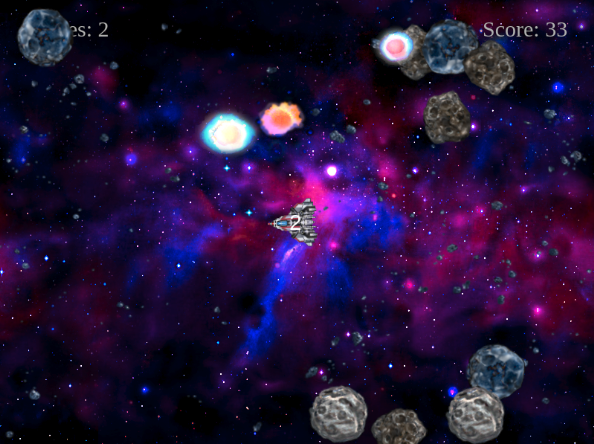I finished the on-line class Introduction to Interactive Programming in Python from Rice University and it was a lot of fun.
This is a screen shot of the last game RiceRocks, which is a simplified version of the arcade game Asteroids. My ship has blown up a few asteroids. 😉
Although the course caters for beginners, I learned a great deal of things. For example, I had never programmed an animated game, so working out this kind of interactive programming was great.
In this post I want to put to the fore an issue which comes up very often. In the RiceRocks game, there was a class Sprite, to create rocks and other objects. The sprite image is based on an image object whose center is a list:
[ x, y ]
The sprite instance has an image_center element which corresponds to the image center. It is created as follows:
self.image_center = info.get_center()
and the method in the Image class
def get_center(self):
return self.center
is returning the center as list. The result is that the center is a reference to the same list. So the sprite.image_center and image.image_center point to the same list.
This is not a problem for what is called in the game static images. But explosions are dynamic, which means that the image is actually a tile of a sequence of the explosion, and tiles are shown one at a time in consecutive frames as a function of the center of each tile.
In my implementation, I create a sprite for the explosion of a rock, so the rock sprite is replaced by the explosion sprite. As the time advances, I change the center of the explosion sprite to display the new frame. This worked only for the first explosion…
As I was changing the image_center of the explosion sprite, I was also changing the center of the original image. The solution was to create the sprite with a copy of the list:
self.image_center = info.get_center()[0:]
